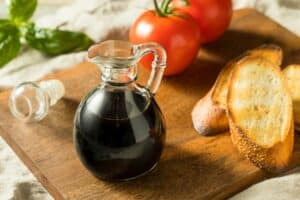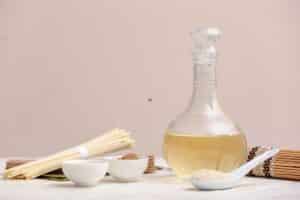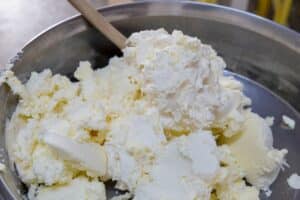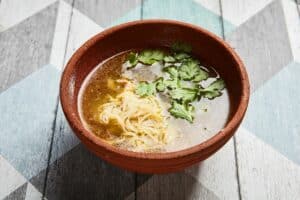If you aren’t able to use milk in a baking project, whether because you don’t have any on-hand or because you don’t consume milk for dietary reasons, there are many excellent options available to you.
Some of the best substitute for milk in baking are soy milk, almond milk, coconut milk, oat milk, or heavy cream.
Innumerable people around the world need to avoid milk in baking for various reasons: some don’t have milk readily available, others choose to avoid animal products for ethical reasons, and many simply can’t drink it–2-3% of children are allergic to dairy, and nearly 75% of the human population is lactose intolerant!
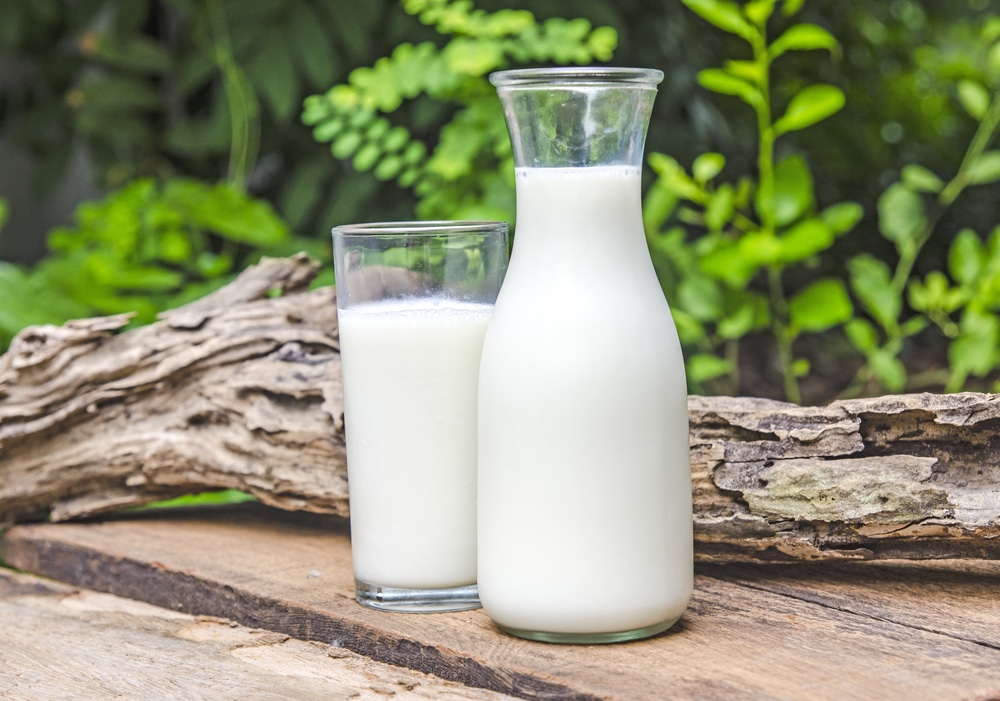
Soy Milk
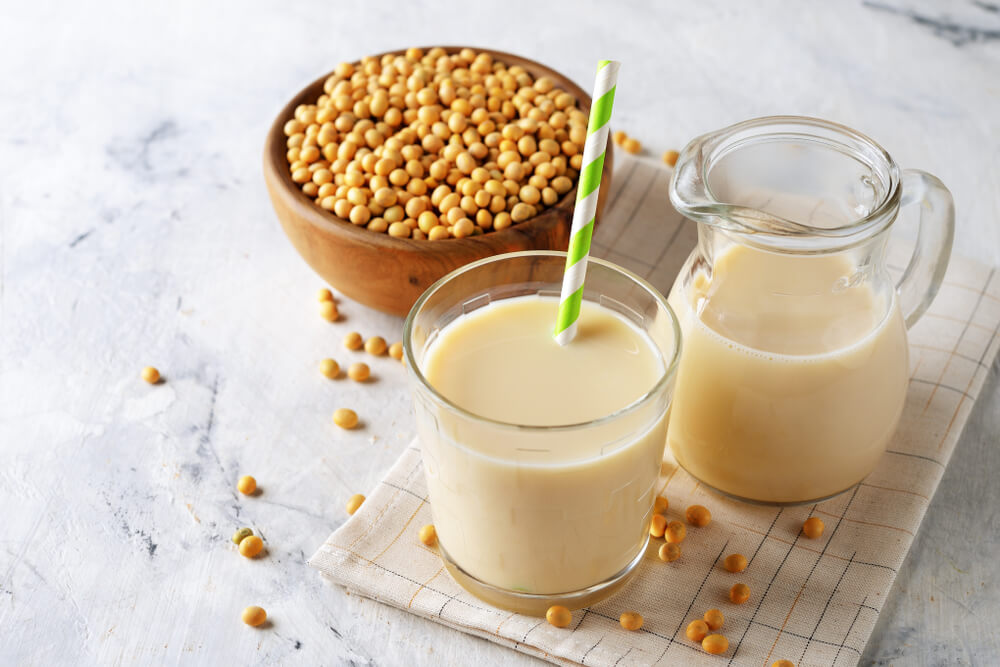
Soy milk was one of the first popular milk replacements for baking and for good reason. It’s readily available in any grocery store and is a perfect replacement for milk in texture and flavor.
In terms of flavor, soy milk is generally a solid substitute for dairy milk–it has a smooth, mild, creamy flavor, though this does vary depending on the brand of soy milk you’re using.
However, these flavor differences are very negligible when it comes to soy milk as a vegan substitute for milk in baking. It’s so similar that you can use soy milk as a one-to-one substitute for dairy milk in anything you’re baking.
Soy milk is also a very strong option for health-conscious bakers. It tends to have 10-20 fewer calories per serving than dairy milk, and though it has just 60 grams of calcium compared to the 305 in dairy milk, this is still a pretty hefty amount. Additionally, when consumed in moderation, soy products are a broadly solid addition to any diet.
The best recipes for baking with soy milk are those where milk is a key ingredient. If you’re curious try your hand at a soymilk cake, soy milk vanilla chiffon cake, or soy milk pancakes. As a note of caution, soy milk is, obviously, not safe for people who are allergic to soy!
Almond Milk
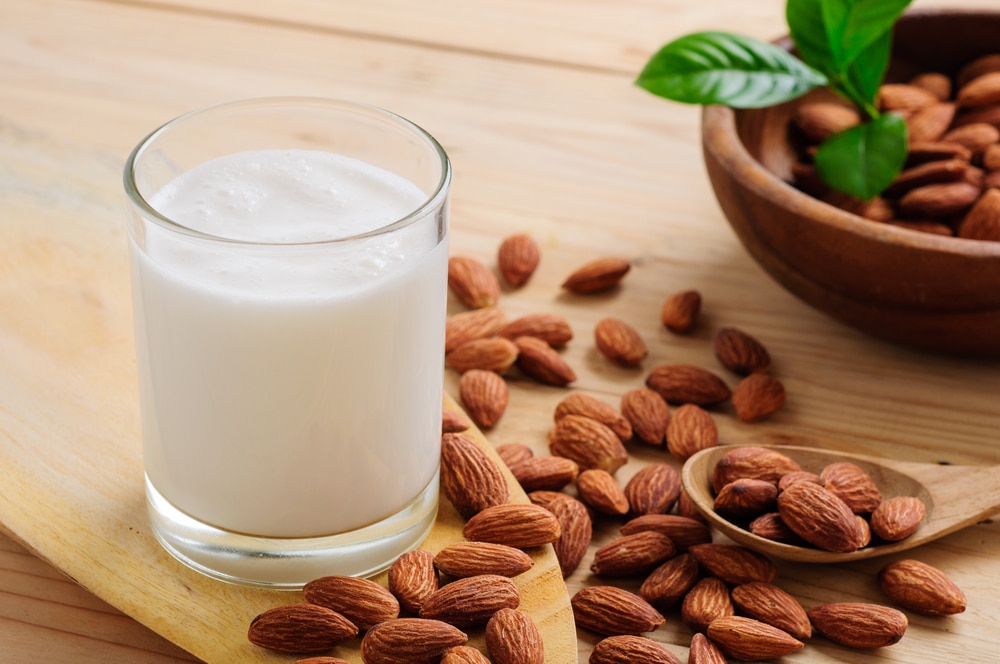
Almond milk is another extremely popular milk replacement for baking. Although it sounds silly to imagine an almond producing milk, it’s quite intuitive: almonds are soaked with water and blended into it, and then the solid components are strained out, leaving a delicious milky fluid behind.
The flavor of almond milk can range depending on the brand and flavor you buy, but it tends to have a sweet and subtly nutty flavor. When it comes to baking, though, you don’t need to worry about this flavor interacting with your recipe; you can substitute it for dairy milk one-to-one, and there won’t be much change.
The one exception to this case is if your almond milk is flavored. Many popular almond milk brands can be sweetened or flavored with vanilla, which will add an extra taste you might not want in your baked goods–a savory bread won’t necessarily benefit from vanilla, for example. For that reason, make sure to opt for unflavored almond milk if your recipe is flavor-sensitive.
Although almond milk is a viable addition to pretty much any recipe for a baked good, it works especially well in pound cakes, bundt cake, cupcakes, brownies, and cobblers. Do keep in mind, of course, that almond milk is not a safe option for those with tree nut allergies.
Coconut Milk
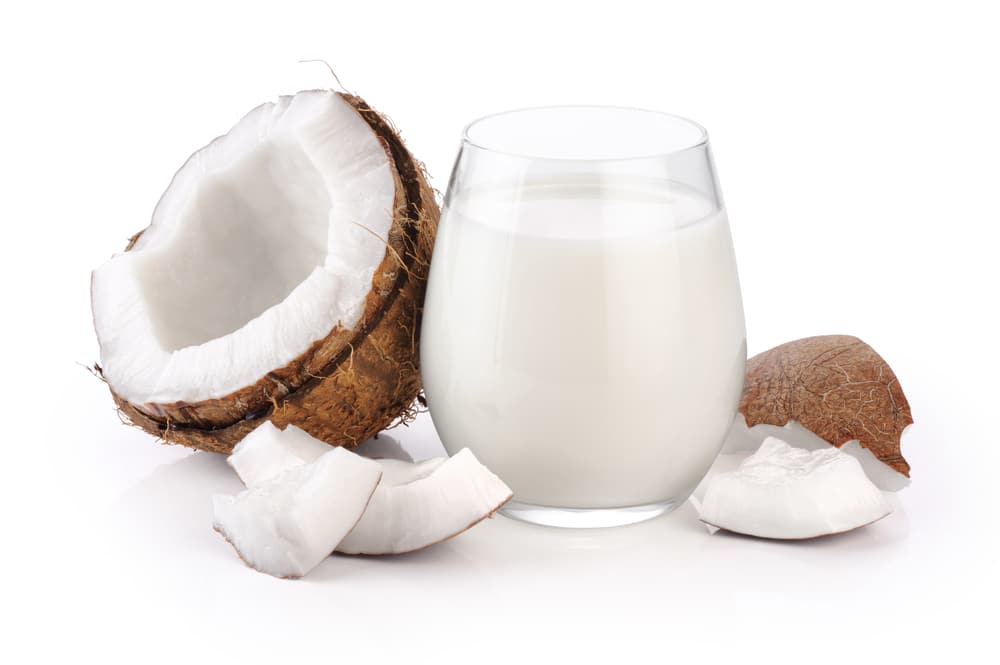
When it comes to baking with coconut milk, you have a few options, as there are several types of drinks bundled together under the label of coconut milk.
One variety of coconut milk comes in a carton and is stocked alongside other non-dairy kinds of milk. This type of coconut milk is made by mixing the white coconut flesh with water and then diluting that mixture with additional water, creating a substance that resembles skim or 1% dairy milk. This type of milk can be used as a one-to-one substitute in baking, though keep in mind that it will carry a lightly sweet coconut flavor.
The other variety of coconut milk is the kind that comes in a can, commonly used in South Asian and Polynesian cuisines. This coconut milk hasn’t been diluted with water and contains more fat than the version mentioned above. If your recipe calls for whole milk, this is an ideal substitute.
When it comes to recipes, your best option is those that the coconut flavor compliments. Try a classic recipe like a coconut cake, a coconut-flavored pound cake, a cake with pistachios and fruity frosting, or a tres leches cake.
Oat Milk
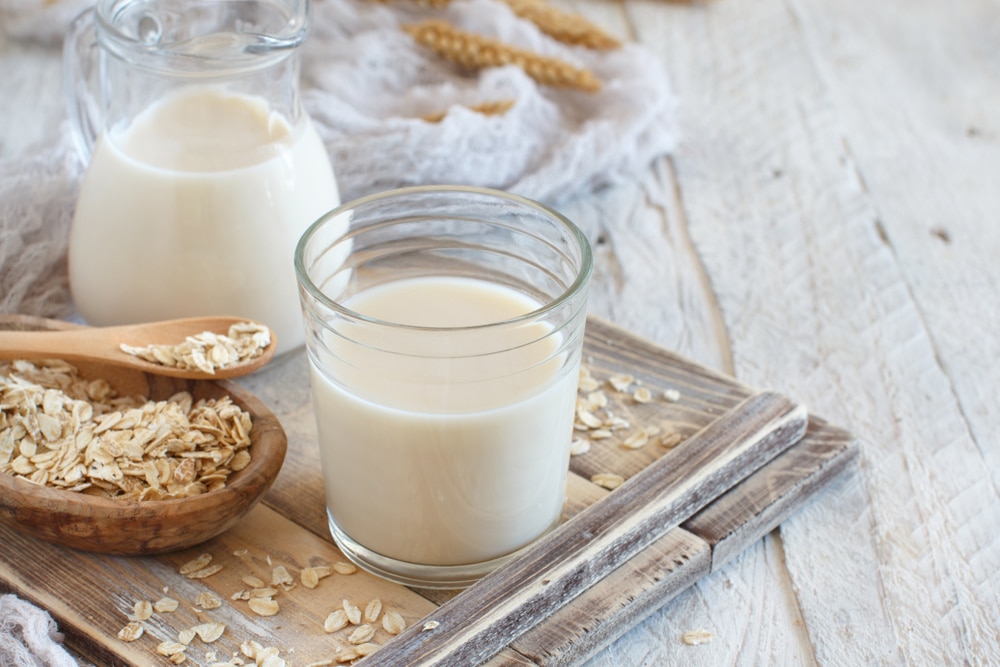
Oat milk is another top substitute for cow’s milk in baking. Akin to almond milk, oat milk is a blended mixture of water and oats. However, some brands include added gums and sugars to enhance the taste or give it a milkier texture.
On the health side, oat milk is an excellent option. While it does have more calories than other milk substitutes (between 140 and 170), it has less fat and is very high in fiber, making it a strong addition to any diet.
In baking, oat milk’s light, sweet flavor means it can alternate easily for milk. Simply swap out dairy milk for oat milk on a one-to-one ratio.
If you like a DIY project, you can even make your oat milk at home! To make your own, combine water, oats, salt, and a sweetener like honey or maple syrup, throw the ingredients in a blender and blast them into a thick white mixture. Next, strain out the solids, and boom, you have a fresh cup of oat milk.
If you’re looking to experiment with oat milk, try a London fog cake, sandwich bread, pancakes, chocolate pudding cake, or even a zucchini fritter.
Yogurt

Rounding out this list is our only non-vegan milk alternative for baking: yogurt. If you don’t have any dairy milk on-hand but happen to have some yogurt, this can be an excellent substitute, as it brings the same sweetness, creaminess, and fattiness that milk would add to a recipe.
In terms of health, yogurt and dairy milk are relatively even–in some ways, yogurt is healthier! It’s rich in proteins, vitamins B2 and B12, and zinc and tends to be lower in sugars. While you lose out on the vitamins A and D that you’d get from milk, these tend to evaporate in baking anyway.
However, keep in mind that this substitution works best for full-fat yogurt substituting for full-fat milk. If you have a recipe that calls for nonfat milk, you may need to add some water to your yogurt to dilute it. Also, ensure that you’re using plain yogurt, as flavored yogurt can throw off the taste of your recipe.
Related Questions
How to substitute buttermilk for milk in baking?
Buttermilk is often used in recipes from pancakes to cornbread to fried fish, so it’s understandable if you want to find a non-dairy version to accommodate dietary needs–or if you simply don’t have any on-hand.
Although buttermilk sounds like it’s a mixture of butter and milk, this isn’t exactly true. Buttermilk originally got its name because it was the liquid left after churning butter out of cream. Nowadays, buttermilk gets made by injecting pasteurized milk with harmless bacteria to thicken it and curdle it.
The great news: this is fairly easy to replicate with non-dairy milk! Simply add one tablespoon of lemon or lime juice into a cup of vegan milk, then let the milk sit for about five minutes. Once it’s curdled, you have a buttermilk substitute that’s perfect for baking.
Can you substitute almond milk for milk in baking?
You most certainly can substitute almond milk for milk in any and all baked goods! Keep in mind that almond milk substitutes most easily when you are working with 2% milk, as it has a similar texture and fat content. If a recipe calls for whole fat milk, almond milk can still substitute–the goods might cook a little faster. In that case, keep an eye on them to make sure they don’t dry out or burn.
Can you substitute oat milk for milk in baking?
Oat milk is an excellent substitute for milk in baking! What makes oat milk so great is that the thickness of the oats adds extra viscosity to milk–in other words, it has a thick texture, not the relatively more watery texture of different non-dairy kinds of milk. As a result, feel free to substitute it one-for-one in your recipes that call for dairy milk.
You might also be interested in:

